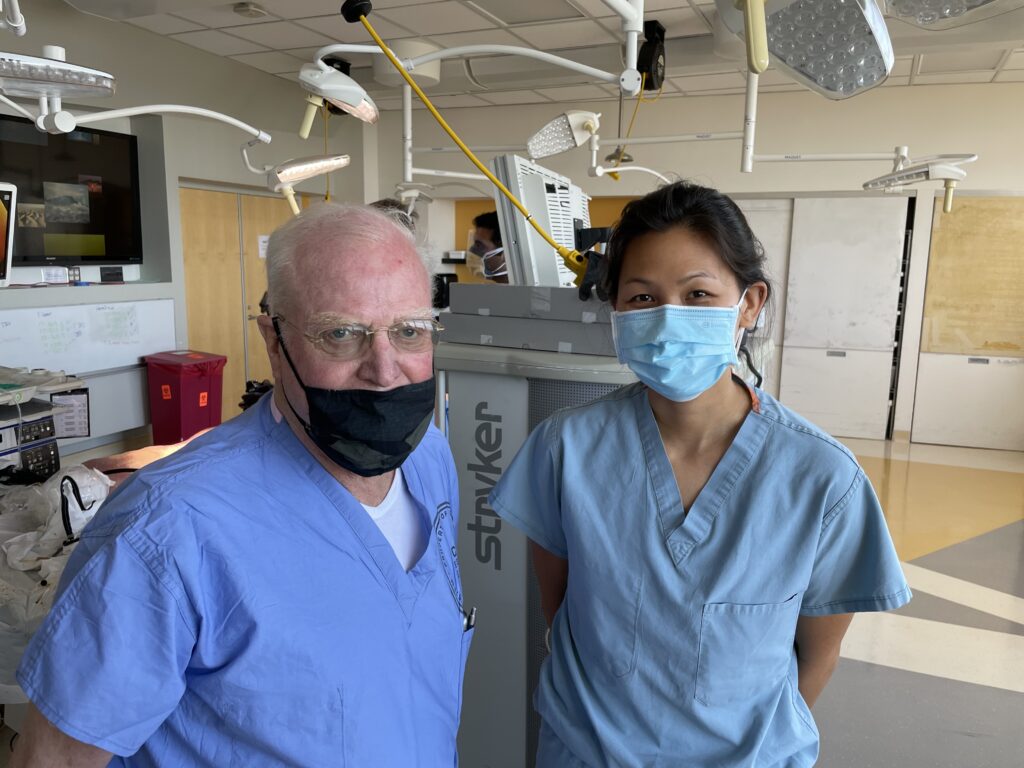March 23, 2022
At the annual meeting of the Society of American Gastrointestinal and Endoscopic Surgeons (SAGES) held this week in Denver, Colorado, a team of researchers led by Myka Labs revealed the results of a major new study to elucidate how strictures, a common and much-feared occurrence in patients with Crohn’s disease, respond to a new type of treatment enabled by recently developed Myka Labs technology. The results of this groundbreaking new study have profound and wide-ranging implications for treating stricture in the GI tract along with other organ systems including the hepatobiliary tract and the urinary tract.
Stricture, a narrowing of the lumen associated with wall thickening, is a hallmark of conditions including Crohn’s disease and can be so serious that the patient is unable to acquire adequate nutrition. While some GI tract strictures respond well to comparatively straightforward interventions like through-the-scope (TTS) balloon dilation, dilation and other conventional interventions provide only transient relief for many stricture patients, with the stricture instead recurring and progressively worsening, leading to major surgery. As a result, new ways of treating stricture that are minimally invasive and provide a durable resolution are highly sought after.

Recent experience by clinicians working closely with Myka Labs to develop improved ways of treating esophageal atresia, a malformation in the esophagus seen in around one in every 2500 newborns, has spurred interest in the possibility of treating strictures using a mechanism of action known as intraluminal longitudinal compression. Intraluminal longitudinal compression is closely related to the mechanism of action that brought about such favorable results in the recent esophageal atresia patients.
With the recent experience with esophageal atresia as the starting point, a group of leading clinicians and researchers including Dr. Caressa Chen of the University of California at San Francisco, Dr. Michael Harrison of Myka Labs and UCSF, Dr. Swanstrom of Myka Labs and the Institute for Image-Guided Surgery in Strasbourg, France, and Dr. Martin Lukas of ISCARE in the Czech Republic teamed up to precisely characterize key aspects of stricture response during ILC. The focus of the study was on strictures in the small bowel. Small bowel strictures serious enough to compromise nutritional intake can occur for a variety of reasons, but are particularly common in Crohn’s disease. Well over a million individuals in the U.S. alone have been diagnosed with Crohn’s disease.
To precisely characterize how strictures respond during ILC, the research team used a set of small clip-like ILC devices developed at Myka Labs. Arrays of ultraminiature sensors built into these ILC clips continuously captured high-resolution data from which the researchers could extract the three-dimensional, time-varying response of the stricture as the therapy progressed. The strictures measure over a centimeter in length at baseline and tend to have significant nonuniformities in the distribution of the fibrotic tissue across the stricture.
By analyzing the data captured by the tiny sensor arrays built into the clips, the team discovered three distinct stages of the stricture response to intraluminal longitudinal compression. The first and second stage are characterized by rapid reduction in stricture length. The research team concluded that, during these two stages, scar tissue is effectively being cut out, representing what can be described as a functional stricturoplasty. During the third stage of the stricture response, healthy tissue grows around the stricturoplasty site, a phenomenon known as neoepithelization. The first and second stages appear to reach completion within just a few hours after the initiation of ILC therapy. That the transition from stricturoplasty to healing occurs in this comparatively short period of time is expected to have important implications for designing ILC-based device systems that can achieve optimal outcomes for patients while also being suitable for use in procedures that are much less invasive–and easier for patients to recover from–than conventional stricturoplasties.
Stricture is one of a variety of high-unmet-need GI tract conditions addressed by pipeline of innovative products from Myka Labs, Inc., a start-up company pioneering advanced systems and technologies for carrying out complex GI tract interventions less invasively. Myka Labs is based in San Francisco, California with operations in Boulder, Colorado and Strasbourg, France.